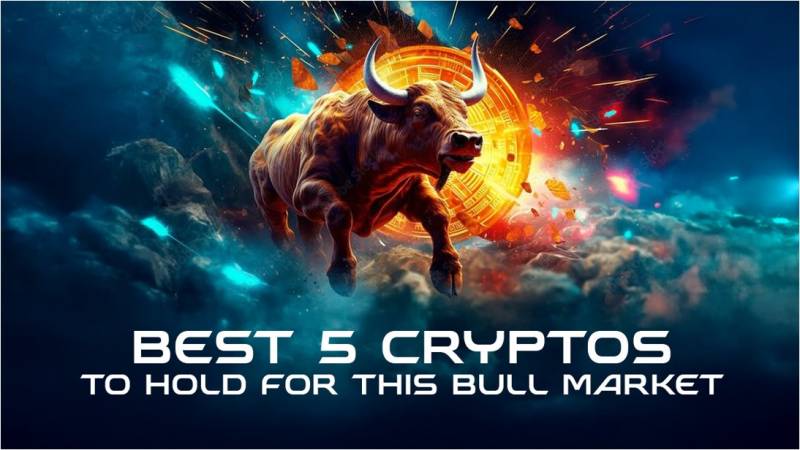 |
|
 |
|
 |
|
 |
|
 |
|
 |
|
 |
|
 |
|
 |
|
 |
|
 |
|
 |
|
 |
|
 |
|
 |
|
Cryptocurrency News Articles
The Crisis of Confidence in Stablecoins: TrueUSD, Tether, and the Urgent Need for Regulation
Feb 08, 2025 at 04:00 pm
Stablecoins have established themselves as an attractive option for those seeking stability within the crypto ecosystem. Unlike other cryptocurrencies, their value is tied to traditional assets such as the U.S. dollar or gold.

Stablecoins, cryptocurrencies designed to maintain a stable value relative to traditional assets like the U.S. dollar, have emerged as a stable presence within the volatile crypto ecosystem. Their value remains largely unaffected by the broader market fluctuations, making them a preferred choice for payments, international transfers, and storing value. However, recent investigations into some of these stablecoins have raised doubts about their transparency and security practices.
TrueUSD’s False Claims on Stablecoin Reserves
One notable case is that of TrueUSD. The SEC's investigation revealed that the company behind this stablecoin misled customers by falsely claiming that its value was fully backed by U.S. dollars held in trust. However, the reality was that nearly all of its reserves were invested in a high-risk hedge fund. Such practices damage the integrity of the crypto industry and highlight the difficulty in verifying and trusting the transparency claims of these stablecoins without real-time audits.
Tether’s Lack of Transparency Raises Red Flags
This isn't the first time the reliability of stablecoins has come under scrutiny. Tether, the company behind USDT — the largest stablecoin in the market — has faced criticism over its lack of transparency regarding its reserves. Previous investigations found that its reserves were not fully backed by U.S. dollars, but included loans and other risky assets. In 2021, the U.S. Commodity Futures Trading Commission sanctioned the company for making misleading disclosures about its reserves.
The TerraUSD Collapse: A Reminder of Crypto Risks
The 2022 TerraUSD crisis was one of the harshest blows to the industry. Unlike Tether or TrueUSD, which are backed by physical assets, TerraUSD was an algorithmic stablecoin. Its system relied on an automatic adjustment mechanism with the Luna cryptocurrency to maintain its peg to the U.S. dollar. When confidence in the system faltered, TerraUSD lost its peg and crashed to a fraction of a cent. Thousands of investors lost their funds in a matter of days, reinforcing the perception that many cryptocurrencies are not as stable as they claim to be.
The Importance of Proper Stablecoin Regulation
One of the biggest issues that continues to plague the crypto industry is the lack of regulation. In the U.S., the SEC has taken separate actions against stablecoin companies that failed to meet their obligations, but the absence of a comprehensive regulatory framework remains the crux of the problem. In contrast, Europe is taking a different approach. With the implementation of MiCA, set for 2025, the EU will establish clear rules for stablecoin issuers. The regulation mandates that at least 30% of received funds must be kept in separate bank accounts, with the remaining portion permitted for investment in secure, highly liquid assets. Additionally, it requires periodic audits to allow investors to verify their solvency.
The European regulation could be a turning point for the market. Stablecoins that comply with clear rules are likely to gain traction over those that lack transparency. While some critics argue that strict regulations could stifle innovation, the ongoing crisis of confidence in the sector highlights the need for oversight to prevent fraud and ensure stability.
Crucial Changes for Sustainable Crypto Growth
Stablecoins are a crucial part of the crypto ecosystem, valued for their stability and ease of use in payments, international transfers, and storing value. Their long-term success, however, hinges on trust. Without a solid and verifiable backing, their stability is an illusion. To enhance their credibility and provide greater security for investors, the adoption of real-time proof of reserves and independent audits is paramount. The future of stablecoins will depend on their ability to prove that they genuinely hold the reserves they claim to have. It is essential to implement clear, fair, and standardized regulations that encourage greater transparency in the sector.
Disclaimer:info@kdj.com
The information provided is not trading advice. kdj.com does not assume any responsibility for any investments made based on the information provided in this article. Cryptocurrencies are highly volatile and it is highly recommended that you invest with caution after thorough research!
If you believe that the content used on this website infringes your copyright, please contact us immediately (info@kdj.com) and we will delete it promptly.
-

-

-

-

- Top 10 Crypto Predictions: Litecoin, Remittix, Mantra, Sui, and Hedera Are the Promising Altcoins to Watch in 2023
- Feb 08, 2025 at 08:51 pm
- Investors are always searching for the best altcoins with promising growth and robust application cases. This year, Litecoin, Remittix, Mantra, Sui, and Hedera are among the most promising candidates.
-

-

-

- Pepe Coin (PEPE) Price Analysis: Livermore Speculative Chart Signals a Potential 190% Rally, But Bearish Signals Persist
- Feb 08, 2025 at 08:51 pm
- While some analysts foresee a major rebound, with one chart pattern indicating a possible 190% surge, market conditions present key challenges that could stand in the way of a recovery.
-

- Panshibi (SHIBI) Presale Gains Momentum — Following PEPE's Playbook?
- Feb 08, 2025 at 08:51 pm
- Meme coins have a history of turning small investments into massive windfalls—or devastating losses. PEPE’s launch was one of the most explosive moments in meme coin history and now, all eyes are on Panshibi (SHIBI) as it follows the same trajectory.
-

- XYZVerse (XYZ): The New Meme Coin Targeting 99,900% Growth, Unlocking G.O.A.T. Status
- Feb 08, 2025 at 08:51 pm
- After the turmoil surrounding PEPE’s recent financial crisis, investors are eagerly searching for the next promising opportunity in the digital asset arena. XYZVerse (XYZ) is emerging as a potential contender, capturing attention with the possibility of substantial returns. Could this newcomer be the breakthrough that early investors are seeking? This article explores the prospects of XYZVerse in the wake of PEPE’s downfall.





























































